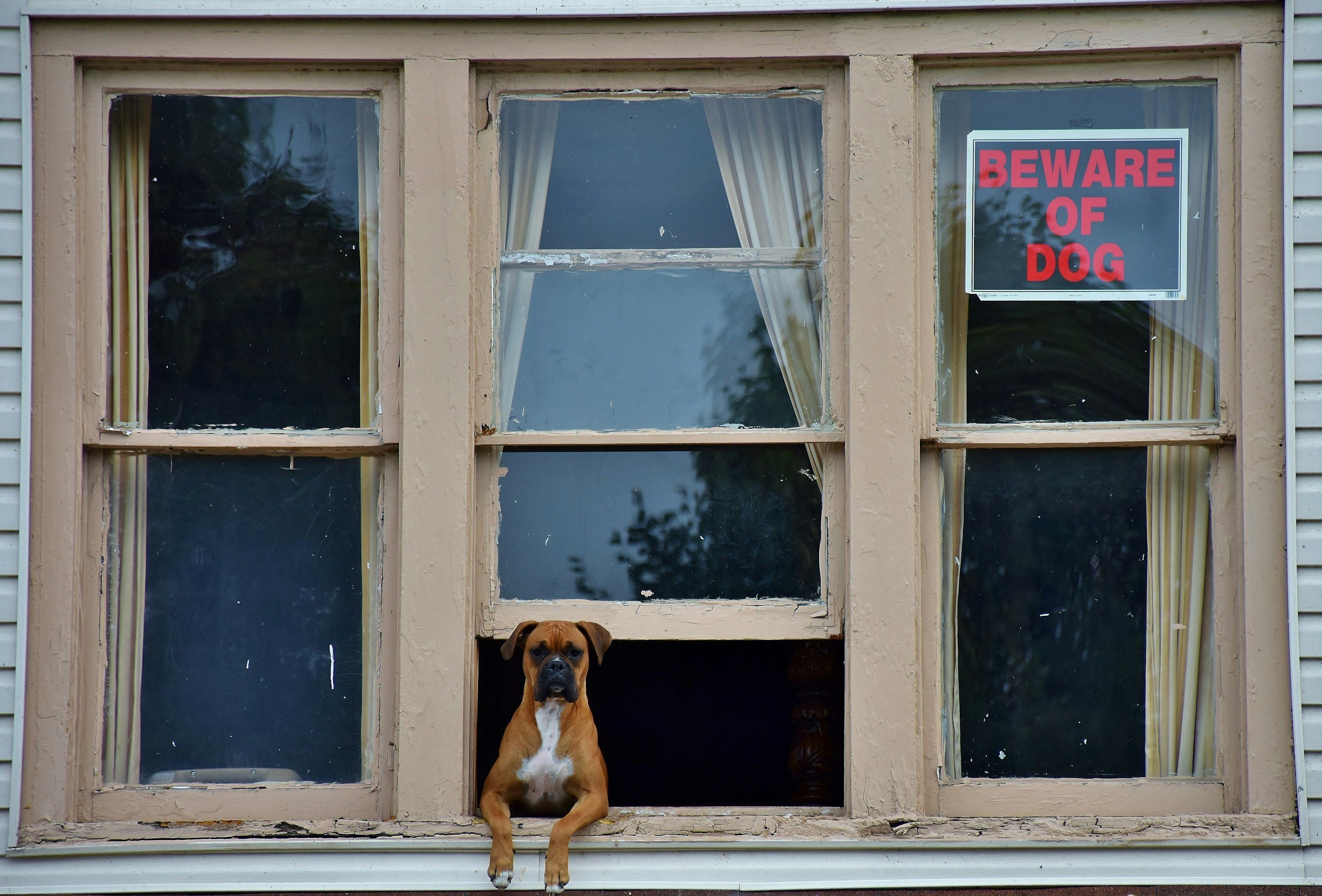Emilee Brewer
Have you ever noticed your dog gets weirdly angry when there’s a barrier between them and another dog? Whether it be a fence, a window, or a baby gate, they just get absurdly mad they can’t get to that dog (or cat, or squirrel, or person). This is what’s known as barrier aggression or barrier frustration. Basically, a dog is absolutely livid something is stopping them from getting to something they want. Don’t they understand they’re being stopped and should accept their fate? Maybe it’s not that straightforward, so let’s dive into barrier frustration in this week’s post!
Barrier frustration presents itself as lunging, barking, and/or growling while being held back by some kind of barrier. There are multiple triggers for barrier reactivity including other dogs, a cat, squirrels, the mailman. It can be anything that they want, but it’s on the other side of this wall. This doesn’t necessarily mean the dog is aggressive though! I’ve got several daycare dogs that get grumpy when there’s a fence between them and their friends, but are absolute angels once that fence is gone. They’re just mad they can’t get to their friends! However, it’s still important to slowly introduce new dogs to each other if they’re displaying barrier aggression just to be safe.
While barrier frustration can appear to be aggressive, it’s usually from fear, overexcitement, stress, or anxiety. Maybe a car passes by and honks their horn. It can startle your dog, and now they’re at the window barking their head off because they can’t get to the car, and rip its tires to shreds. This would be an example of a fear response that leads to barrier frustration. Maybe they see their best bud taking a walk but can’t get to them because there’s a fence in the way. They’re overly excited and again, appear to be aggressive because there’s a barrier. It can be a number of reasons for barrier aggression, and it’s important to identify why they’re behaving this way. Undue stress can lead to health complications for your dog (panting, pacing, shaking) or cause unwanted behaviors like destroying your furniture to get their energy out.
So let’s talk about how to correct barrier frustration. First, you want to identify what is causing the reaction. For example, if your dog is freaking out because there’s trick-or-treaters at the door, try placing them in another room with calming music that can mask the sound of the doorbell constantly going off. Give them treats every time they don’t react. Determine what your pup’s threshold is. If they’re so hyped up they refuse treats, they’re beyond their threshold and should be removed from the situation to try again later. Keep exposure sessions short so as not to overwhelm them!
Barrier frustration is honestly one of the funnier phenomena to me. Dogs get so incredibly bothered because they’re being stopped from eating that squirrel. I’ve got a sibling pair that comes for daycare that will be perfect in the yard together, but as soon as there’s a fence between them, they start fighting. That’s your brother! Why are you fighting him because suddenly there’s a fence between you?! Regardless, you always want to be careful when a dog is showing frustration. It doesn’t necessarily mean they’re going to become aggressive, but they’re getting pretty peeved off, and then everyone is having a bad day because the dog is being a sourpuss. Just remember, don’t overexpose your pooch to their trigger and give them lots of treats for demonstrating behaviors you want to see!


